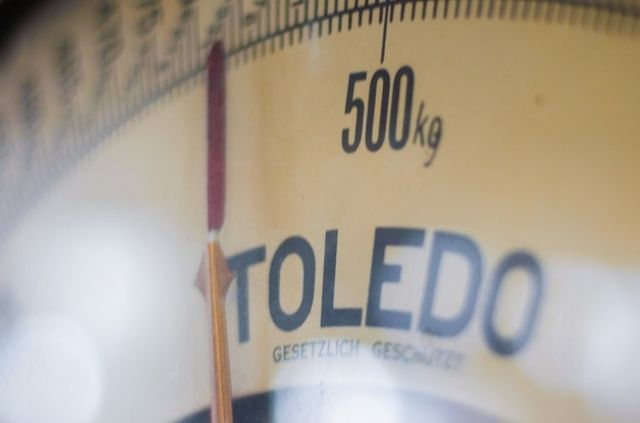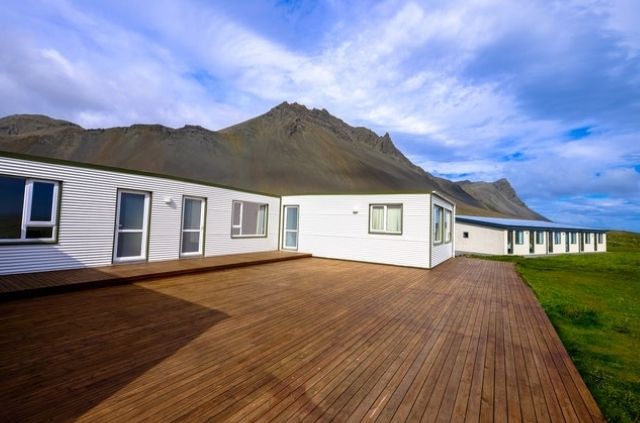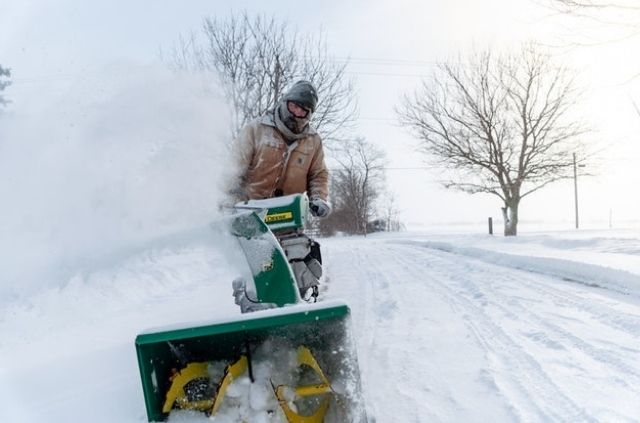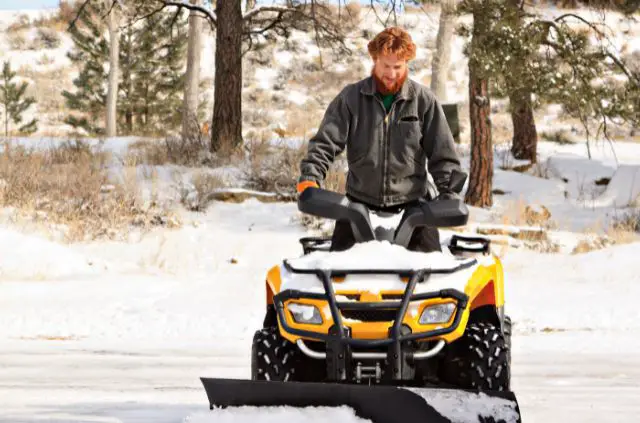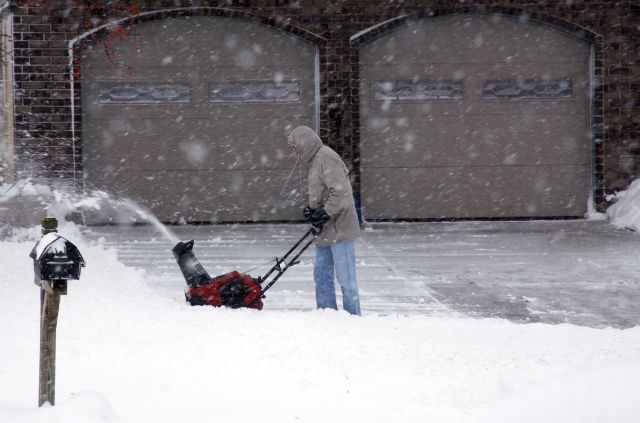Can Snow Blowers Be Stored Outside?
If you live in a place with extremely cold weather, snow blowers are essential. But without a garage you’re probably wondering where to store the machine. This brings us to the following question: can snow blowers be stored outside?
Yes, snow blowers can be stored outside by following the correct precautions. You will need to remove any fuel, drain the oil, and do a number of other tasks to keep the machine in good working condition.
How to Store a Snow blower Outside
There’s more to storing a snow blower outside than just throwing a tarp over it. You need to make sure essential components have been removed, in order to get the most out of your machine.
1. Clean the Snow Blower
Before moving on to the below steps, it’s crucial to clean the entire snow blower. Use a hose, or a pressure washer and rinse down the entire machine.
This will remove any dirt, salt, and sand on the exterior. You want to avoid putting the snow blower away dirty. This can potentially corrode internal components and metal parts might rust.
This is also a good time to inspect the skid shoes. These parts see a lot of wear and tear as they are constantly making contact with the ground and they may need to be replaced.
2. Take out the Spark Plug
Removing the spark plug is a safe way to prevent the snow blower from kick-starting when not in use. This can present a dangerous situation for you and others around the machine.
It’s also a smart thing to do before moving on to the other steps. When you’re working around the machine, you might get near the auger.
Taking out the spark plug beforehand will guarantee that these blades will not spin. All makes and models are different, so make sure to consult the manual if you need help removing the spark plug.
3. Remove Fuel
One of the first things you should do when storing a snow blower is to remove any fuel. There are a few different reasons why this is a good practice.
For starters, any gas sitting in the tank will be a fire hazard. But it will also prevent any deposits from building up and clogging the fuel lines.
The good news is that snow blower fuel tanks are not that big (compared to a lawn mower). You can either run the machine until it runs out of gas, or remove the fuel with a turkey baster.
4. Drain the Oil
The next step to storing a snow blower outside is to drain the oil. You should generally change the oil after every season, but especially when the machine won’t be used for a long time.
Most snow blowers will have some kind of a drain plug for easy access. It’s easier to drain the oil when the engine is warm, as this helps any debris drain out with the oil.
Run the snow blower for around 5 minutes to warm up. Then remove the plug and allow the oil to drain. If your snow blower does not have a drain plug you can tip the machine and pour it out.
5. Get a Cover
Now that everything has been drained and removed from the snow blower, it’s finally time to store it. Most people will be fine with using a tarp, but you could always buy a cover for a better fit.
You should put some thought in where the snow blower will be stored. Avoid placing it in areas directly under a roof edge, because water will drip down onto the machine.
You also want to avoid storing the snow blower in your front yard. Anyone driving by on the street will see and possibly steel the machine. Make sure to hide your snow blower out of sight for security reasons.
Can You Store a Snow Blower Outside in the Winter?
The answer to this question is simple. Yes, you can store a snow blower outside in the winter. If you don’t plan on using the machine make sure to follow the steps listed above.
But if you want to use the snow blower during the winter, you should consider the following:
Keep the Snow Blower Elevated
It’s always a good idea to keep the machine about 2-3 inches off the ground outside. This will help prevent a build-up of water from ruining the snow blower.
When the snow does melt, or if there is heavy amounts of rain, it’s not smart to have the snow blower sitting in water for an extended period of time. This can cause rust and damage the exterior.
Store it on a Flat Surface
If possible you should try to keep the snow blower on a flat surface outside when not in use. When it comes time to use it, you don’t want find yourself starting the machine on a slope.
This can create a dangerous scenario, as the snow blower is more likely to slide back on an uneven surface. If you have no other choice, try leveling out the area to make it even.
Secure the Snow Blower
There are two important things you need to do here. The first is that the machine should be secured so it does not move. You can place blocks in between the wheels to prevent this from happening.
The second part to securing a snow blower is to keep it locked up. This will prevent any thieves from steeling the machine. Make sure you use a heavy duty chain and lock for security.
Final Thoughts
There’s nothing wrong with storing a snow blower outside, as long as you follow the proper steps. Following the process listed above will extend the life of your machine for years to come.
You not only want to keep the exterior protected with a tarp, but you should also remove the spark plug, gas, and drain the oil. This will keep the internal components working properly for the next use.
Further Reading
Search Terms
- Can snow blowers be stored outside?
- Can you store a snow blower outside in the winter?

